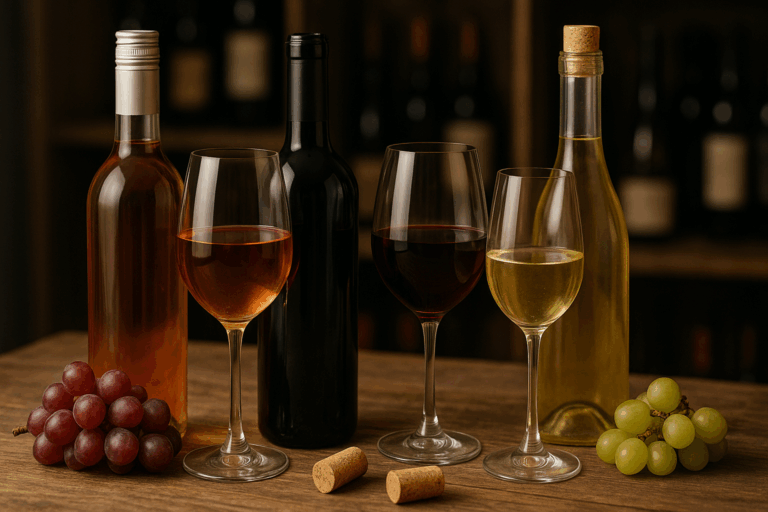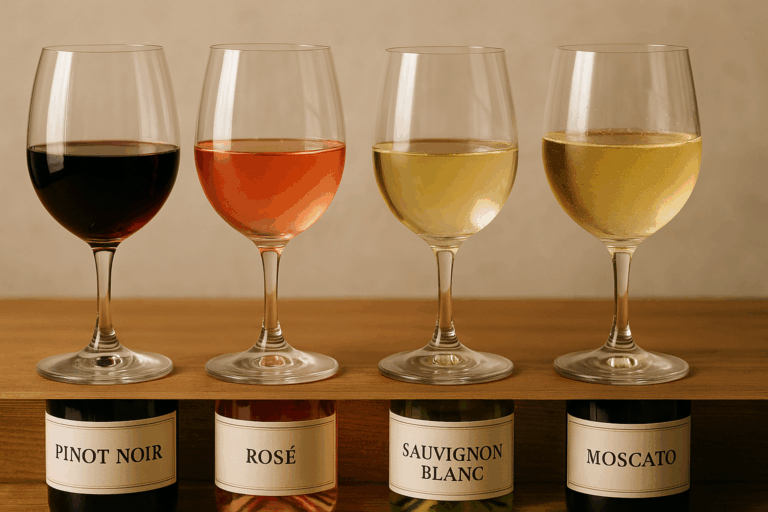How to Read a Wine Menu Without Feeling Lost
Sitting down at a restaurant and facing a wine menu can be intimidating especially when it’s filled with unfamiliar names, regions, and prices. But with a little guidance, you can learn to navigate wine lists confidently, ask the right questions, and choose a bottle that suits your meal and your taste.
This article will help you decode wine menus and make smart choices without second-guessing yourself.
Why Wine Menus Feel Complicated
Wine menus often reflect the restaurant’s theme, the sommelier’s style, and regional focus. Some are organized by country, others by grape variety, and some by flavor profile or body.
They might use foreign terms, obscure regions, or unfamiliar producers — but don’t worry. Once you understand the structure, they become much easier to read.
Step 1: Understand the Menu Layout
Most wine menus are divided by:
1. Type or Color
- Red Wines
- White Wines
- Rosé Wines
- Sparkling Wines
- Dessert Wines
2. Origin
Wines may be grouped by:
- Country: France, Italy, Argentina, etc.
- Region: Napa Valley, Rioja, Burgundy
- Old World vs New World: Old World (Europe) wines are often more earthy and subtle; New World wines (U.S., Chile, Australia) tend to be fruit-forward and bold.
3. Grape Variety
Some menus are organized by grape types:
- Chardonnay, Sauvignon Blanc, Cabernet Sauvignon, Pinot Noir, etc.
4. Body or Flavor Profile
Some menus simplify by using categories like:
- Light-bodied, Medium-bodied, Full-bodied
- Or even: Crisp & Refreshing, Bold & Earthy, Fruity & Sweet
This is especially helpful for beginners.
Step 2: Look for Clues in Descriptions
Many menus now include short flavor notes and pairings, like:
- “Bright citrus, green apple, and herbal finish” (Sauvignon Blanc)
- “Full-bodied red with dark fruit and chocolate notes” (Cabernet Sauvignon)
These descriptions can guide you based on your taste preference.
If there’s no description, don’t hesitate to ask your server for help — it’s completely normal.
Step 3: Decide on a Budget
Wine lists often offer bottles across a wide price range. Keep these tips in mind:
- You don’t need to choose the cheapest or the most expensive.
- Mid-range wines often offer the best balance of quality and value.
- Ask for a house wine if you’re unsure — they’re usually affordable and food-friendly.
Also, if you’re not ordering a bottle, look for by-the-glass options, which allow more flexibility and experimentation.
Step 4: Pair Wine with Your Meal
A general rule of thumb:
- White wine with lighter dishes (salads, fish, chicken)
- Red wine with heavier or richer foods (beef, lamb, pasta with red sauce)
- Rosé with versatile dishes (cheese boards, grilled vegetables)
- Sparkling wine with salty or fried foods (yes, really!)
- Sweet wine with desserts
If you’re not sure, ask: “What wine would pair well with this dish?” Most servers or sommeliers are trained to help.
Step 5: Know Common Wine Menu Terms
Here are some words you might see on menus:
- Vintage: The year the grapes were harvested. Older doesn’t always mean better — some wines are best when young.
- NV: Non-vintage, usually in sparkling wines.
- Estate-bottled: Indicates the wine was produced and bottled at the vineyard where the grapes were grown.
- Brut: Very dry sparkling wine.
- Off-dry: Slightly sweet.
- Reserve/Reserva/Riserva: Typically aged longer and considered higher quality, though meanings vary by country.
Step 6: Ask the Right Questions
Servers or sommeliers are there to guide you. Don’t feel pressured — instead, say something like:
- “I usually like something fruity and smooth — do you have a red wine like that?”
- “I’m having the salmon. Do you recommend a white or rosé?”
- “What’s your most popular wine by the glass right now?”
Being honest about your preferences (even if you’re not sure) helps them make the best recommendation.
Step 7: Trust Yourself
At the end of the day, wine is about personal enjoyment. Just because a wine is expensive or highly rated doesn’t mean it’s right for your palate.
Don’t be afraid to try something new — or stick with a favorite if you find one you love. Over time, your confidence will grow.
Bonus Tip: Use a Wine App at the Table
If you’re unsure, use a wine app like Vivino to quickly scan the wine name and read tasting notes, food pairings, and user reviews. It’s discreet and incredibly helpful.
Final Word: You’ve Got This
Reading a wine menu might seem like decoding a foreign language at first, but with each experience, it becomes easier. Use the layout, trust the descriptions, ask questions, and focus on what you enjoy.
Wine should never feel exclusive — it should be inviting, exciting, and always delicious.






